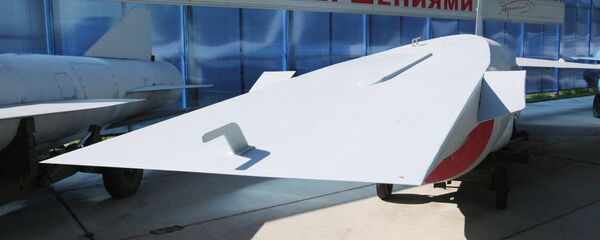He said that the Russian military is currently on the verge of a "new scientific and technical revolution" that includes developing new armament systems based on physical principles that have never been used before in this field.
The next generation hypersonic weapons will use "principally new materials" and operate in plasma, according to Borisov.
The Russia 3M22 Zircon hypersonic missile is faster than a sniper bullet.
— Scott's Humor (@ScottsHumor) 17 декабря 2016 г.
Good news, no time to get scared. https://t.co/zi3FEPMda8
A hypersonic weapon usually has a speed between 3,840 miles per hour (Mach 5) and 7,680 miles per hour (Mach 10).
Furthermore, these systems use sophisticated technology to maneuver and allow for the rapid delivery of warheads, precise targeting and survivability against a wide range of missile defense systems.
#Russian Deputy DM Borisov: #Russia expects a serious breakthrough in the field of hypersonic weapons based on principally new materials pic.twitter.com/P2bEgUAAg7
— Warfare Worldwide (@WarfareWW) 19 января 2017 г.
Going head to head with the United States and China, Russia has been developing its own hypersonic weapons during the past few years. In 2015, Russia conducted a series of tests of the Yu-71 hypersonic attack aircraft, which is part of secret missile program codenamed "Project 4202." The glider was said to reach speeds of up to 7,000 miles per hour.
Speaking to RT, Russian military expert Pavel Zolotarev did not rule out that the Yu-71 will be put into service with the Russian Strategic Missile Troops, which are currently being modernized.
The Yu-74 system specification as well as the details of the test remain top secret. Reportedly, the gliders are developed to be loaded onto the Russian RS-28 Sarmat (NATO classification SS-X-30) — state-of-the-art, heavy liquid-propelled intercontinental ballistic missiles which are currently being developed for the Russian army.
Each Yu-74 glider can be equipped with a nuclear warhead, electronic warfare (EW) applications or false target simulators.
Reportedly, new hypersonic cruise missiles will be in many respects similar to the Yu-74, which would not only be able to evade NATO's missile defense systems but will be also be capable of penetrating through the US Terminal High Altitude Area Defense (THAAD) shield.
March 2016 saw the first tests of the Russian Navy's new hypersonic Zircon cruise missiles, which are expected to reach a speed of Mach 5-6.
It will be mounted on Russia's newest fifth-generation Husky-class nuclear submarines, which are currently under development.
He emphasized that such weapons would significantly weaken the potential of enemy missile defense. "It's obvious that with such speeds – when missiles will be capable of flying through the atmosphere at 7-12 times the speed of sound, all [air] defense systems will be weakened considerably."







